A therapeutic massage is a type of massage that focuses on providing relaxation and relieving stress and other forms of discomfort. It is a manual treatment that uses a combination of massage techniques, such as Swedish massage, deep tissue massage, and trigger point massage, to promote healing and relaxation. Therapeutic massage has many health benefits, including increased flexibility, improved circulation, and reduced tension. Additionally, it helps to reduce pain and promote healing from injuries. In this article, you will learn more about the techniques and benefits of therapeutic massage.
Contents
What is a Therapeutic Massage?
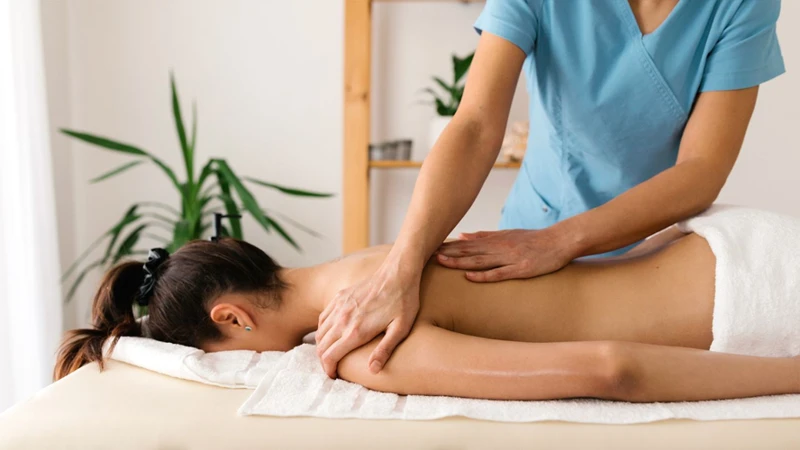
A therapeutic massage is a type of massage that focuses on providing physical and psychological benefits to individuals. It is a holistic approach to health and wellness that combines various massage techniques to reduce stress, improve circulation, and promote relaxation.
Benefits of Therapeutic Massage
- Reduces Stress and Anxiety – Massage helps to reduce cortisol levels, the hormone that causes stress. It also improves mood and relieves tension, allowing the body to feel relaxed and calm.
- Promotes Restful Sleep – A therapeutic massage can aid in providing a deeper, more restful sleep. It helps to reduce fatigue and improve energy levels so you can get a better night’s sleep.
- Alleviates Pain – Massage helps to reduce muscle tension and increase flexibility, allowing the body to be in less pain. It also improves circulation and helps to reduce inflammation, which can lead to further pain relief.
- Improves Circulation – Massage helps to increase blood flow and oxygen to the body, improving circulation. This can help to reduce inflammation, improve energy levels, and promote healing.
- Increases Mobility – Massage helps to improve joint flexibility and range of motion. This can help to reduce pain and stiffness, improving overall mobility.
Techniques Used in Therapeutic Massage
Therapeutic massage is typically done using a combination of massage techniques. These include:
- Swedish Massage – This is a gentle, full-body massage that uses long, gliding strokes to reduce tension and promote relaxation.
- Deep Tissue Massage – This massage uses firm pressure and slow strokes to reach deeper layers of muscle and tissue. This can help to reduce pain, increase mobility, and improve circulation.
- Sports Massage – This massage is specifically designed for athletes and is often used to prevent and treat injuries. It can help to improve range of motion and reduce muscle tension.
- Trigger Point Massage – This massage uses direct pressure to release areas of tension in the body. It can help to reduce pain, improve circulation, and restore mobility.
- Reflexology – This massage focuses on pressure points in the feet and hands to promote relaxation and reduce stress. It can help to improve circulation, reduce inflammation, and promote healing.
Therapeutic massage is a powerful and effective tool for achieving physical and psychological wellness. By combining various massage techniques, it can provide a wide range of benefits such as reducing stress and pain, promoting restful sleep, and improving circulation.
Types of Therapeutic Massage
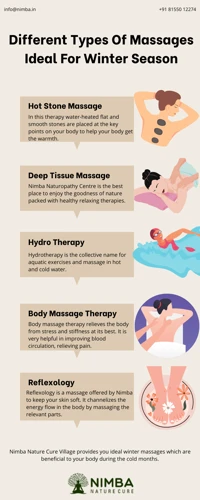
Therapeutic massage is an umbrella term for a variety of massage techniques that are used to target specific areas of the body and help relieve pain, tension, and stress. Common types of therapeutic massage include Swedish massage, deep tissue massage, and sports massage.
Swedish Massage is the most popular type of massage and is known for its light, gentle kneading motions and long strokes. Swedish massage is used to relax and reduce stress, improve circulation, and provide relief from muscle tension.
Deep Tissue Massage targets the deeper layers of muscle and connective tissue. It is used to release chronic muscle tension and knots, and is beneficial for those with lower back pain and stiffness. Deep tissue massage is often combined with Swedish massage techniques.
Sports Massage is designed to help athletes prepare for and recover from training and competition. It helps reduce muscle tension, improve flexibility, and increase range of motion. Sports massage can also be used to treat injuries and prevent future injury.
All types of therapeutic massage can help improve overall health and wellbeing. They can help reduce stress, improve circulation, and provide relief from muscle pain and tension. Therapeutic massage is an effective treatment for a variety of conditions and can be tailored to meet the needs of each individual.
Benefits of Therapeutic Massage
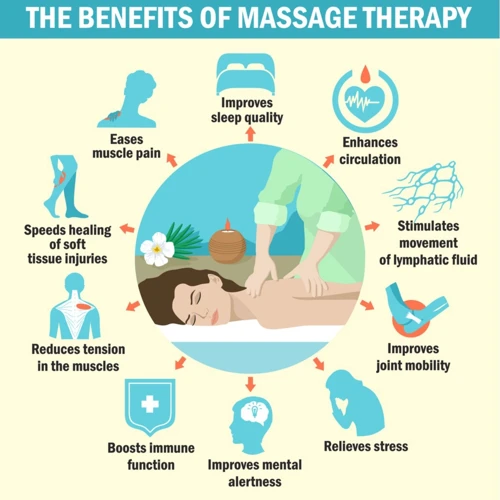
- Reduces Stress – Those who receive therapeutic massage experience reduced stress levels and improved mental clarity.
- Improves Circulation – Massage therapy helps to improve circulation by increasing blood flow, which helps the body to function more efficiently.
- Relieves Pain – Therapeutic massage is a great way to relieve pain in the body, whether it be in the neck, back, or other areas.
- Improves Posture – Massage therapy can help to correct and maintain proper posture, resulting in less pain and improved performance.
- Increases Flexibility – Massage therapy increases flexibility by loosening and lengthening the muscles, which can help to improve performance in sports and everyday activities.
- Promotes Relaxation – Therapeutic massage can help to reduce anxiety and promote relaxation, which can have positive effects on both the body and mind.
Therapeutic massage is a type of massage that is focused on providing health benefits, such as pain relief and improved circulation. By applying pressure to certain points on the body, massage therapists can help to reduce tension and promote relaxation. The techniques used in therapeutic massage can vary, but generally involve kneading, rubbing, and stretching the body’s muscles and soft tissues. With the help of a trained massage therapist, those who receive therapeutic massage can experience a range of benefits, such as reduced stress, improved circulation, and increased flexibility.
Techniques Used in Therapeutic Massage
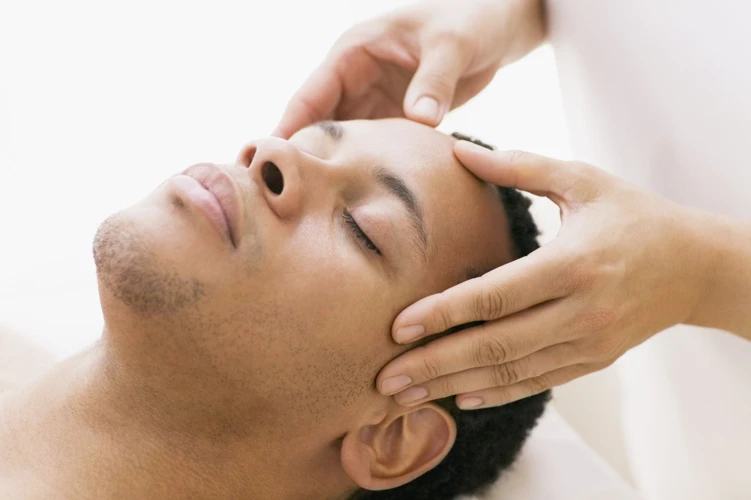
Therapeutic massage is a holistic treatment that combines various massage techniques to relieve tension and promote relaxation. Its main goal is to provide therapeutic benefits to the recipient, helping them to relax and heal.
Swedish Massage is the most common form of massage and is used to promote relaxation and reduce muscular tension. It typically involves the use of long, gliding strokes, kneading, and circular movements.
Deep Tissue Massage is used to target deeper layers of muscle and connective tissue. It is usually employed to address chronic pain, muscle tension, and injury recovery. The massage therapist will use deep pressure and long strokes to reach the deeper layers of muscle and fascia.
Sports Massage is often used to help athletes recover from sports-related injuries or to improve their performance. The massage therapist will use a variety of techniques including stretching, kneading, and friction techniques to target specific muscle groups.
Trigger Point Therapy is used to target and release knots of tension in the muscles. The massage therapist will use their fingers to locate and press on the knots. This can help to reduce pain and improve range of motion.
Shiatsu is a traditional Japanese massage technique that uses finger pressure and stretching to stimulate the body’s energy pathways. The massage therapist will use their fingers and thumbs to apply pressure to specific points on the body.
Reflexology is a massage technique that focuses on the feet and hands. The massage therapist will use their fingers to apply pressure to specific points on the feet and hands. This can help to reduce stress and improve overall health.
Therapeutic massage can provide a range of benefits, such as reducing stress, improving circulation, and stimulating the release of endorphins. With the right massage techniques and a skilled massage therapist, it can be a great way to relax and unwind.
Contraindications for Therapeutic Massage
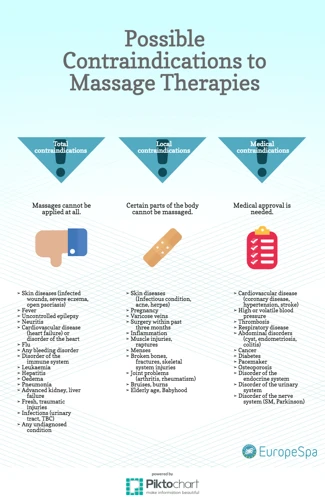
Therapeutic massage is not recommended for everyone. Individuals with certain medical conditions, such as recent surgery, joint replacement, cancer, deep vein thrombosis, fractures, burns, or acute infection, should not receive massage. People who have a fever, are in pain, or are on certain medications should also seek medical advice before receiving massage. If you are pregnant, it is best to consult your doctor before having a massage.
Certain massage techniques may also be contraindicated depending on your medical condition. For example, deep tissue massage should not be used if you have an underlying medical condition or if you are taking certain medications. If in doubt, check with your doctor before having a massage.
The following are contraindications for massage therapy:
- Recent surgery
- Joint replacement
- Cancer
- Deep vein thrombosis
- Fractures
- Burns
- Acute infection
- Fever
- Pain
- Certain medications
- Pregnancy
If you are unsure whether you are suitable for massage therapy, it is best to consult your healthcare provider before receiving a massage.
Cost of Therapeutic Massage
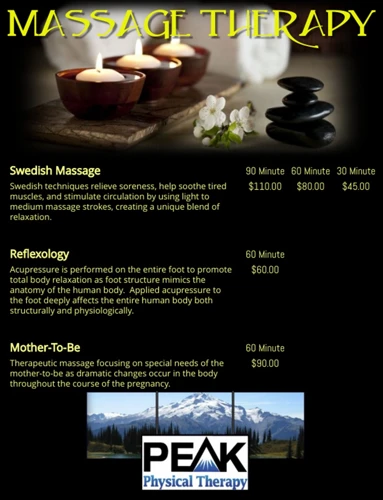
The cost of a therapeutic massage varies depending on the type and length of the treatment. Generally, a one-hour massage session can range from $50-100. Longer sessions may cost more, while shorter sessions can be more affordable. Various massage modalities may also have different cost ranges. Some massage therapists may offer discounted rates for regular clients or for a package of massage treatments. Additional fees, such as taxes and tips, may also increase the overall cost of the massage. Therefore, it is important to understand all the associated costs prior to booking a therapeutic massage.
If you are on a budget, there are still ways to enjoy the benefits of therapeutic massage. Many massage clinics and spas offer promotional deals or discounts for first-time customers. You can also ask your massage therapist about their payment and cancellation policies to ensure that you are getting the best value for your money. Additionally, you may be able to use your health insurance or flexible spending account to cover all or part of the cost of therapeutic massage.
Further Reading and Resources
Books:
- The Complete Guide to Massage, by Susan Mumford
- Massage Therapy: Principles and Practices, by Susan G. Salvo
- The Art of Massage, by Robert Noah Calvert
Websites:
How to Find a Qualified Therapist
- Check credentials: Make sure the therapist is licensed and certified in therapeutic massage. Ask for references or reviews from previous customers.
- Determine specialties: Ask what specialties the therapist has, such as sports massage, deep tissue massage, Swedish massage, etc.
- Talk about what you want: Before the massage, discuss your goals and any issues that you want to address. This will help the therapist customize a massage to meet your needs.
- Know the risks: Be aware of the potential risks and contraindications associated with therapeutic massage, such as muscle soreness, bruising, or skin irritation.
- Ask about pricing: Prices for therapeutic massage vary depending on the therapist, the length of the session, and the type of massage. Be sure to ask about the cost before committing to a session.
Finding a qualified therapist is an important part of getting a therapeutic massage. A certified massage therapist will be able to provide a safe and effective massage, tailored to your individual needs.
Frequently Asked Questions
What types of massage techniques are used in therapeutic massage?
- Swedish Massage – This is the most common type of therapeutic massage. It uses long, gentle gliding strokes, kneading, and circular movements on superficial layers of muscle using massage lotion or oil.
- Deep Tissue Massage – This massage technique uses slower, more-forceful strokes to target the deeper layers of muscle and connective tissue. It is beneficial in releasing chronic muscle tension.
- Trigger Point Massage – Trigger point therapy is a bodywork technique that involves the applying of pressure to tender muscle tissue in order to relieve pain and dysfunction in other parts of the body.
- Myofascial Release – This technique focuses on releasing muscular shortness and tightness. It involves applying gentle, sustained pressure into the myofascial connective tissue restrictions to eliminate pain and restore motion.
- Sports Massage – This massage technique is similar to Swedish massage, but the deeper pressure is beneficial in releasing chronic muscle tension. It is often used before, during, and after athletic events.
- Shiatsu Massage – This type of massage uses finger pressure to stimulate energy flow in the body. It includes kneading, pressing, and tapping movements, as well as stretching.
What are the Physical and Mental Benefits of Therapeutic Massage?
- Physical Benefits
- Reduction in muscle tension and stiffness
- Improved circulation of blood and lymphatic fluids
- Enhanced flexibility, mobility and range of motion
- Reduction in stress hormones and elevated mood
- Reduction in fatigue
- Reduction in pain and discomfort
- Mental Benefits
- Relaxation and improved sleep
- Reduction in stress, anxiety and depression
- Improved concentration and focus
- Increased feelings of well-being and relaxation
Is it safe to receive a therapeutic massage while pregnant?
- Yes: It is generally safe to receive a therapeutic massage while pregnant. However, it is important to consult a qualified healthcare professional to ensure that you are choosing the right therapist and techniques.
- Benefits: A therapeutic massage during pregnancy can help reduce stress, tension and fatigue, as well as help improve blood circulation, reduce joint pain and improve relaxation.
- Technique: Therapeutic massage techniques used during pregnancy should be gentle and slow, without deep tissue work. It is important to use massage oils that are specifically designed for pregnant women.
- Safety: It is important to ensure that the therapist is qualified and experienced in working with pregnant women, and that the massage is done in a comfortable, safe environment.
How Often Should I Get a Therapeutic Massage?
It is generally recommended to receive a therapeutic massage every 4 to 6 weeks. This allows for the benefits of the massage to be felt over a longer period of time and helps minimize stress and tension buildup. Depending on your individual needs, it is possible to receive therapeutic massage more often. Speak to your therapist about how often they recommend you get a massage.
How Long Does a Typical Therapeutic Massage Session Last?
A typical therapeutic massage session typically lasts for between 30 minutes to 1 hour. The length of the session depends on the massage technique used, the area and number of muscles worked on, and the desired outcome.
- 30 minutes: A 30-minute session is best for addressing one specific area, such as the neck, shoulders, or back.
- 45 minutes: A 45-minute session is ideal for targeting two or three areas of the body, such as the back and legs.
- 60 minutes: A 60-minute session is the best option for a full-body massage, which can include the back, arms, legs, feet, hands, and face.
For those with chronic pain, or who are looking for a more in-depth massage, a session of 90 minutes or more is recommended. This allows the therapist to focus on areas that need extra attention and to use more massage techniques.
Conclusion
Therapeutic massage is an effective, natural way to reduce muscle tension and pain, improve circulation, enhance relaxation, and promote overall health and well-being. It is important to choose a massage therapist who is qualified and experienced, and to discuss any health concerns before receiving the massage. With so many techniques available, it is easy to find a massage that fits the needs of the individual.

